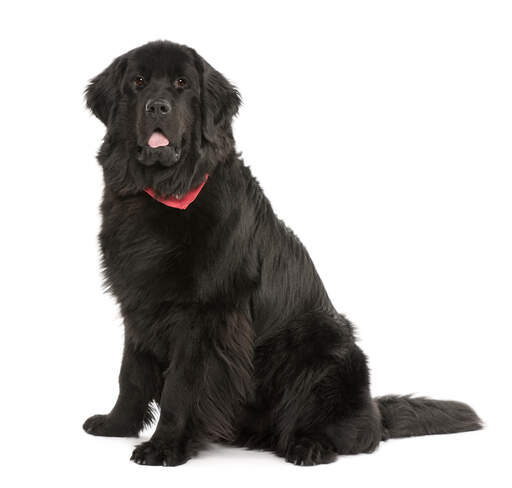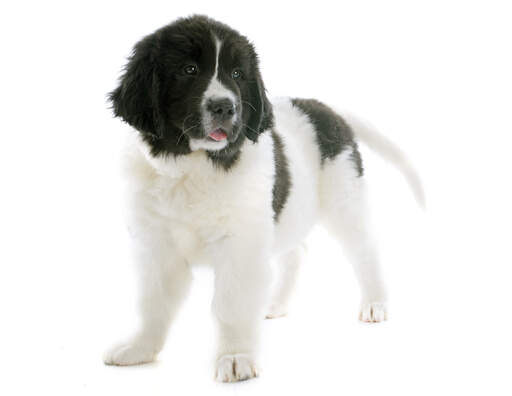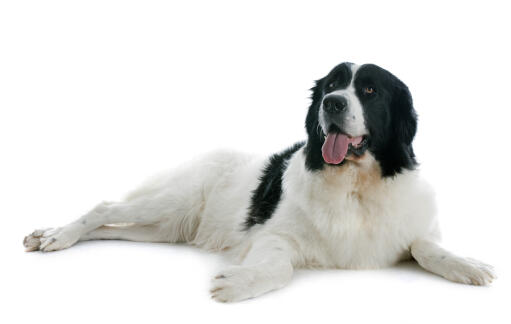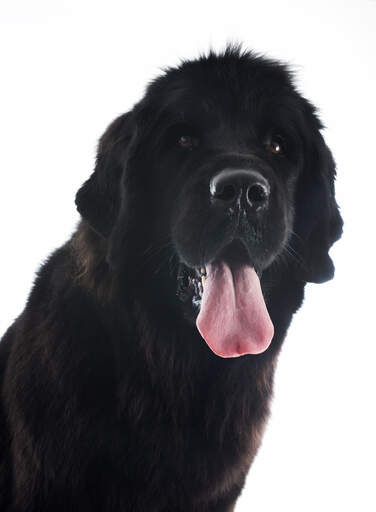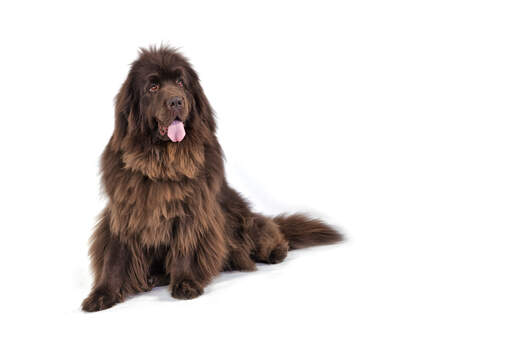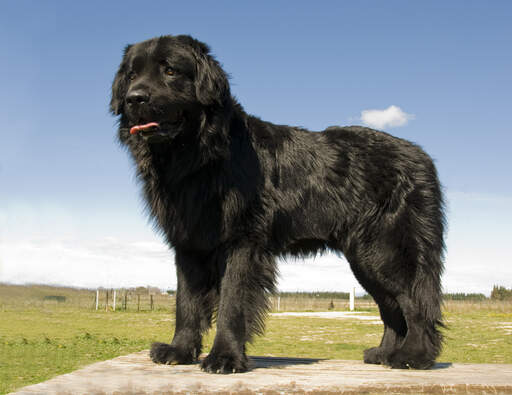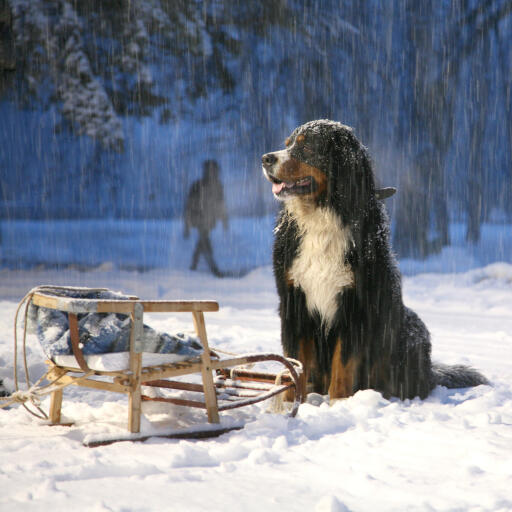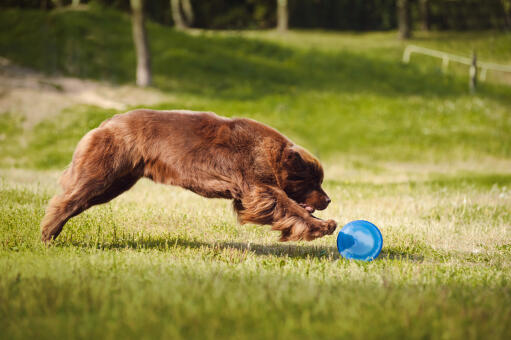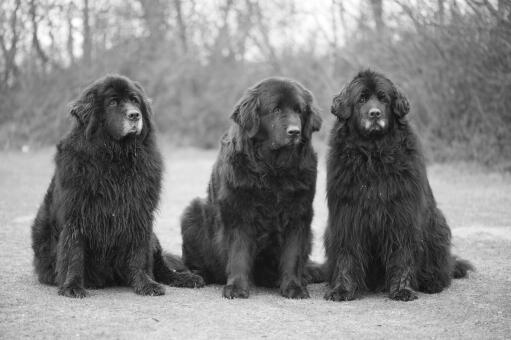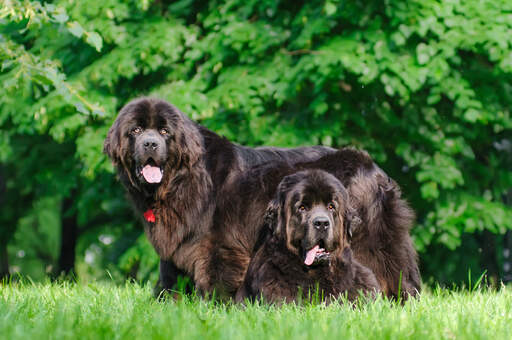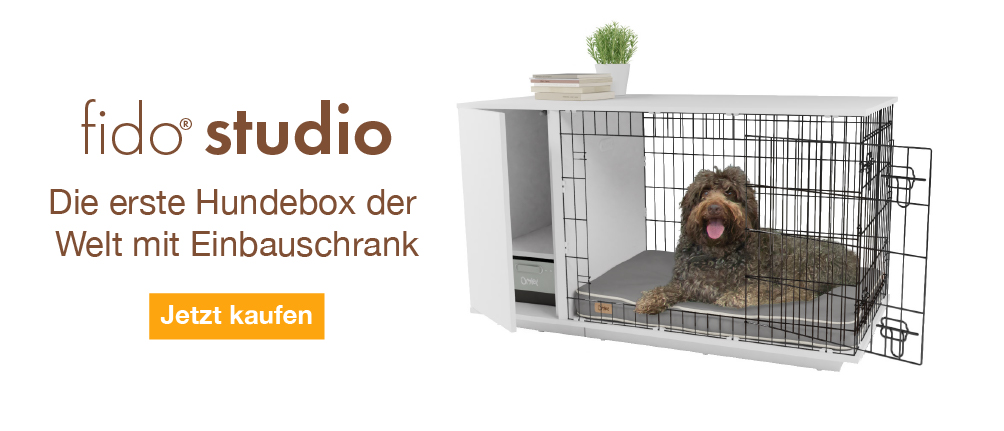Neufundländer












Geschichte
The Newfoundland breed originates from Newfoundland in Canada and shares many traits with the St Bernard and Mastiff. The original breed was more slight and it is believed that breeding began with Portuguese Fishermen's Mastiffs in the 16th century. Used as a working dog, they would haul nets, swim and pull carts for the fishermen. A well rounded, strong dog that could undertake almost any task. They excel in the water and have a built in ability to know when someone is in trouble in the water. There are numerous stories of untrained Newfoundlands jumping into the water to save people.
Verhalten
The huge size of the Newfoundland is not for everyone, but this is a sweet natured, calm dog. They are incredibly loving and loyal and big softies at heart. They have webbed feet and a double coat which gives a clue to it's favourite activity; swimming. They love to swim and jump in with little regard for anything in their way. The double coat protects them from the cold and they are very strong swimmers. Newfoundlands are docile and obedient, but training must start early; by six months they are very strong and need to learn to heal on a lead. They are quite intelligent and do learn at their own pace, but are happy to please their owner and crave attention. They fit well in a family and love everyone they meet, a real people dog. The only downside is their size, they can accidentally knock small children over without even noticing. They are rarely aggressive towards other dogs or strangers and have a sweet disposition making them very good as therapy dogs. They will try all they can to climb on to your lap and be close to you. However, if they or their family feel threatened they can be protective.
For such a large dog they only need moderate exercise, a swim if you are able to let them. They are quite lazy at times and will need to be dragged out for a walk if they are napping. A decent walk will usually do and as long as water isn't involved, recall skills are usually good. They tend to drool and saturate the whole area when having a drink!
Grooming is limited to brushing a couple of times a week and annual trim. They do shed a lot of fur, so brushing more often when moulting will limit the fur around the house. Health wise, they can suffer from Canine Hip & Elbow Dysplasia as well as Bloat.
Charakter
Newfoundlands have a sweet natured and protective temperament. Adoring their family these gentle giants are immensely strong dogs who love to go out for a cold walk and jump into any water that they come across. Definitely not a pushover these dogs like to think for themselves and need lots of training in order for them to respect you.
They love meeting new people and animals and this should be encouraged from an early age to help them become more rounded dogs.
Gesundheitliche Probleme
Health problems that may affect Newfoundlands include canine hip dysplasia (CHD), elbow dysplasia, bloat, cancer, eye problems, heart problems and urinary infections.
Einzelheiten zur Rasse
- Status: Common
- Lebenserwartung: 8 - 10 years
- Produktgewicht: 50 - 70 kg
- Höhe: 26 - 29"
- Selten: NEIN
- Fell: Größe M - Zweifach
- Pflegeanforderungen: Täglich
- Stadt oder Land: Land
- Mindestanforderungen an Umgebung: Großes Haus
- Mindestanforderungen an Garten: Großer Garten
- Rassetyp: Arbeitshund
- Version: Giant
- Energieniveau: Größe M
- Benötigte Bewegung: Bis zu einer Stunde

